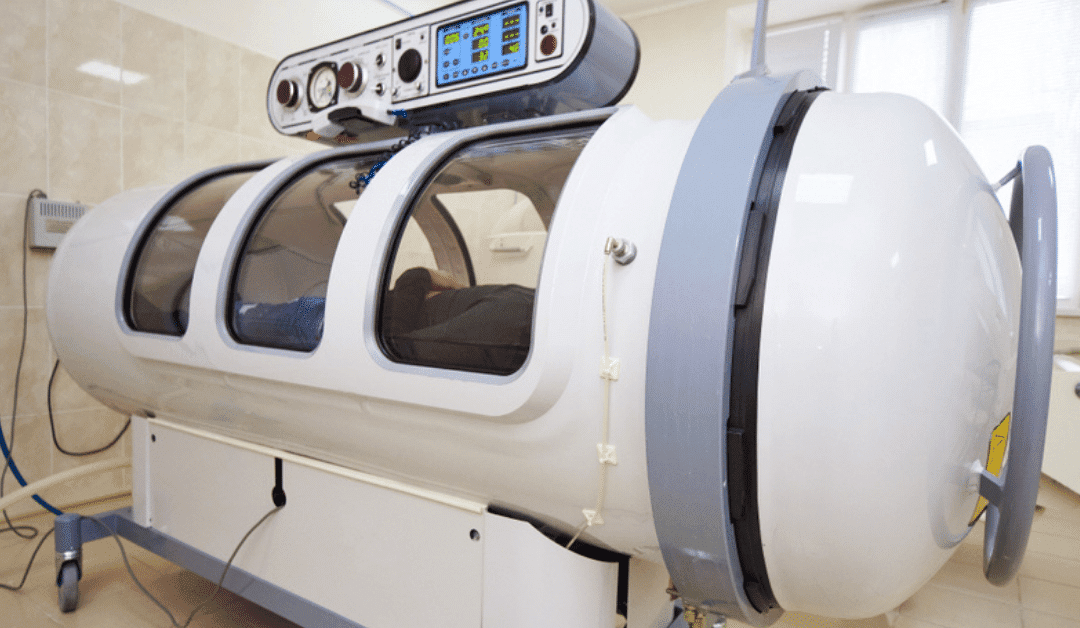Hyperbaric oxygen therapy (HBOT) is a rising star of medical treatments. It treats numerous abnormal diseases and conditions. That’s why many people ask, “What does hyperbaric oxygen therapy do?”.
The primary goal of HBOT is to elevate blood oxygen levels. It helps the body’s recovery processes. For this purpose, a pressurized chamber is prepared for the patient.
Historical Facts about HBOT
In the early 20th century, HBOT was first used in the United States. In the 1940s, the U.S. Navy began using it to treat decompression sickness in deep-sea divers, which led to its widespread use. It was a broadly involved treatment for carbon monoxide harming by the 1960s.
Over a dozen diseases can currently be treated with HBOT, including:
- Chronic diabetic wounds
- Decompression sickness.
Also read about HOCATT side effects.
What Does HBOT Treat?
Many medical disorders have been authorized for treatment using hyperbaric oxygen therapy, including:
- Carbon monoxide and cyanide poisoning
- Gas gangrene
- Crush injuries
- Decompression sickness
- Compromised skin grafts
- Osteomyelitis (bone infection)
- Necrotizing soft tissue infections
- Air or gas embolisms
- Chronic diabetic wounds
What Does Hyperbaric Oxygen Therapy Do?
HBOT’s primary objective is to provide oxygen to oxygen-starved tissues, which aids in healing in several ways.
Oxygenation of Tissues
HBOT raises blood oxygen levels. This accelerates healing and reduces edema. When wounds are not healing correctly due to a lack of oxygen, this method works exceptionally well.
Preventing Reperfusion Injury
When oxygen-deprived tissues gain blood, they can pose serious harm. HBOT decreases the formation of oxygen radicals, which can hinder blood flow and worsen an injury.
Fighting Infection
HBOT fights infections by:
- Elevating the oxygen supply in tissues
- Inhibiting some bacteria
- Improving the efficiency of white blood cells (WBCs)
Formation of New Cells
HBOT increases the production of new:
- Blood vessels
- Collagen
- Skin cells
Read: How much bacteriostatic water to mix with 5mg of semaglutide?
Types of Hyperbaric Oxygen Chambers
In HBOT treatments, two different kinds of chambers are used:
Monoplace Chamber
The patient lies down in this MRI-style chamber, which holds one person and breaths only pure oxygen.
Multiplace Chamber
Patients can be accommodated in this chamber simultaneously, and they can breathe in oxygen by donning masks or hoods.
What to Expect During HBOT?
HBOT requires a prescription from a medical professional before beginning. Therapy duration could be from 45 to 300 minutes, depending upon the underlying health condition.
Patients sit or lie comfortably in the chamber and breathe deeply. Following the session, moderate side effects can occur, including headaches, claustrophobia, or dizziness.
Precautions and Health Hazards
HBOT is typically safe. However, it might not be appropriate for all users. This treatment should not be used by those who have:
- Recently had ear surgery
- Lung conditions
- Colds
- Fevers
Some serious, rare adverse effects of HBOT are:
- Eye damage
- Sinus problems
- Ear trauma
Oxygen poisoning is an uncommon condition that can cause convulsions or lung issues. Thus, before proceeding, it is essential to discuss the advantages and disadvantages of a healthcare professional.
The Bottom Line
Comprehending what does hyperbaric oxygen therapy do might be your opportunity to go for this treatment. HBOT raises the body’s innate healing power. It is a potent tool for healing various illnesses. Nonetheless,there might be some rare risks. Therefore, speak with our healthcare professionals about hyperbaric oxygen therapy Houston TX, US.

